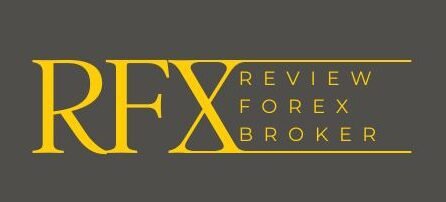In the fast-paced world of online trading, selecting the right broker can feel like navigating a minefield. Beyond flashy platforms and promises of high returns, the true cost of trading often lies hidden in the fine print: an array of fees and charges that can quietly erode your profits. As we move through 2025, transparency has become a non-negotiable trait for reputable brokers.
The good news? A growing number of platforms are committed to clear, upfront pricing. But what exactly are these “hidden fees” to watch out for, and which brokers are leading the charge in transparency?
The Elusive “Hidden Fees” Every Trader Should Know
Before we unveil the transparent leaders, let’s shine a light on the common ways brokers can obscure costs:
- Wide Spreads on “Commission-Free” Accounts: This is the most prevalent. While a broker might advertise “zero commission,” they often compensate by widening the “spread” – the difference between the buy (ask) and sell (bid) price of an asset. A seemingly small difference can add up significantly, especially for frequent traders.
- Overnight (Swap) Fees: If you hold a position open overnight, you’ll likely incur a swap fee (or receive a credit). These are essentially interest charges based on the interest rate differential between the two currencies in a pair. While legitimate, opaque calculations or excessively high rates can be a problem.
- Inactivity Fees: Some brokers charge a fee if your account remains dormant for a certain period. This can be a nasty surprise for casual traders or those who take breaks.
- Deposit and Withdrawal Fees: While less common among top-tier brokers now, some might charge for specific deposit methods or for withdrawing funds, particularly via wire transfers.
- Slippage: This isn’t strictly a “fee,” but it’s a hidden cost. Slippage occurs when your order is executed at a different price than you requested due to market volatility or insufficient liquidity. While sometimes positive, negative slippage reduces your effective profit. Transparent brokers are upfront about their execution speeds and slippage statistics.
- “Premium” Features or Data Subscriptions: Some platforms might entice you with a basic free tier, only to gate essential tools, real-time data, or advanced analytics behind paid subscriptions.
- Currency Conversion Fees: If your account is in one currency (e.g., USD) but you trade an asset denominated in another (e.g., EUR/GBP), there might be a conversion fee or an unfavorable exchange rate applied.
The Most Transparent Brokers of 2025
While the brokerage landscape is constantly evolving, several brokers consistently stand out for their commitment to clear, competitive pricing and comprehensive disclosure. These platforms understand that trust is built on clarity:
- XTB:
- Why they’re transparent: XTB is frequently lauded for its straightforward fee structure, primarily operating on a spread-only model for Forex and CFDs. They clearly detail their spreads, overnight funding fees, and any inactivity charges. Their commitment to transparency extends to offering comparative analyses of user trading behaviors, fostering a culture of openness.
- What to expect: Competitive spreads, clearly communicated overnight fees, and no hidden deposit/withdrawal charges (though third-party bank charges may apply).
- OANDA:
- Why they’re transparent: OANDA has a long-standing reputation for transparent pricing and excellent customer care. They provide detailed information on spreads, commissions (if applicable to the account type), and overnight financing. Their regulatory compliance across multiple jurisdictions further underscores their reliability.
- What to expect: Clear bid/ask spreads, transparent swap rates, and often detailed contract specifications available directly on their platform. Voted “Most Trusted” in various industry awards, highlighting their focus on integrity.
- IG:
- Why they’re transparent: A long-established and highly regulated broker, IG maintains transparency through detailed fee schedules on its website. They provide clarity on spreads, financing costs, and any additional charges like guaranteed stops or inactivity fees. Their extensive educational resources also help traders understand the cost structure.
- What to expect: Clear breakdown of all potential costs, including spreads (which vary by instrument), overnight charges, and administrative fees.
- FOREX.com:
- Why they’re transparent: FOREX.com prides itself on offering clear pricing models. They clearly distinguish between their Standard accounts (spread-only) and Commission accounts (tighter spreads plus a commission), allowing traders to choose based on their preferred cost structure. Their fee details are readily accessible.
- What to expect: Well-defined spreads and commissions for different account types, clearly stated overnight financing costs, and transparency around guaranteed stop-loss order fees.
How to Ensure Transparency When Choosing a Broker:
- Read the Fine Print: Don’t just skim. Read the entire fee schedule, terms and conditions, and any Product Disclosure Statements (PDS).
- Use the Demo Account: A demo account isn’t just for practicing trading; it’s also for familiarizing yourself with the platform’s execution, reported spreads, and how fees are displayed.
- Compare All Costs, Not Just Spreads: Look at the total cost of trading, including spreads, commissions, swap fees, and any potential inactivity or withdrawal charges.
- Check Regulatory Status: Ensure the broker is regulated by reputable authorities (e.g., FCA, CySEC, ASIC, NFA). Regulatory oversight often mandates transparency.
- Contact Customer Support: Don’t hesitate to ask direct questions about fees and charges. A transparent broker will provide clear, unambiguous answers.
In 2025, transparency is no longer a luxury but a necessity for Forex brokers. By choosing a broker that champions clear pricing, you empower yourself to make better-informed trading decisions, minimize unexpected costs, and build a trading journey rooted in trust and clarity.

